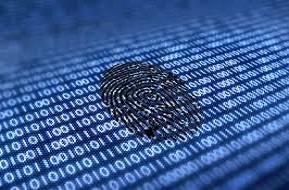
PDCIL - CSP-203-Unde ...
Topic outline
-

Program on Cyber Forensics
Key Highlights
- Name: Cyber Forensics
- Credits: 3
- Faculty: Ms.Ananthi Rajiah
- Mode: Class room / Online
- Level: Beginner / Intermediate
- Medium: English
- Resources: Case Studies and Assignments
-
Unit 1: Cyber Crime: Cyber world - Data - Information – cyber threat - cyber-crime – White collar crimes – economic offense – cyber stalking - cyber extortion – insider threat - Hacker - types– cyber terrorism - cyber espionage - cyber warfare -weapons - Professional Ethics: Characteristics - system of professions - computing profession - professional relationships - code of ethics and professional conduct - Ethical dilemmas – Ethical decision making - Cyber Forensic Evidence managementUnit 2 : Types of Cyber Crime: Data frauds - data diddling - scavenging - data theft - data leakage – data hiding - Information theft – cyber-squatting - Id theft - Password theft – key logger - Child Pornography - obscene messages - Job Racketing - Marketing and Advertisement Rackets - Nigerian frauds- pay per click scams – web defacement - Accounting Frauds - Fraud Schemes - ATM frauds - credit, debit card crimes - Card Cloning - salami techniques - IP spoofing - email & ip address – Telecommunication Fraud - Software piracyUnit 3: Disk Forensics : Digital data – digital device – Hard disk – Types – Disk characteristics – SSD - File systems - NTFS – MFT Structure - fragmentation -MFT fragmentation – Files and attributes - File hashing - Slack space – Disk Forensics tools - Win Hex – Disk imaging – write blockers – types of blockers - Data Carving – techniques - Scalpel - Registry Forensics - Registry – registry data types –RegEdit -concept of timeline – Anti forensics.Unit 4: Software Forensics : Volatile Live Vs Offline Forensics - Artifacts - System Information - Linux ~ Windows – System commands - Network information – Network commands - proc file system - Software Program - source code - types of software - Source code repository - software license - commercial piracy - soft lifting - structures & versions - Analysis Tools - Objects of analysis - Obfuscation – code Obfuscation - Stylometric - author characteristics - Software Forensic challenges – Principles of SteganographyUnit 5: Network Forensics: Network components - Port scans – SYN flood -Key Loggers - Email Forensics - email spoofing – Phishing – mail header analysis - Network protocols – Protocols Susceptible to Sniffing - Active and Passive Sniffing - Wireshark – Capture and Display Filters - pcap analysis – Problems - Trojans and Back-doors, Overt and Covert Channels, Types of Trojans - Botnets - types of botnet- Structure of bots – Crime bots - Spamming bots - DoS – DDoS Attacks – types - Honey Pots - Forensic evidences.